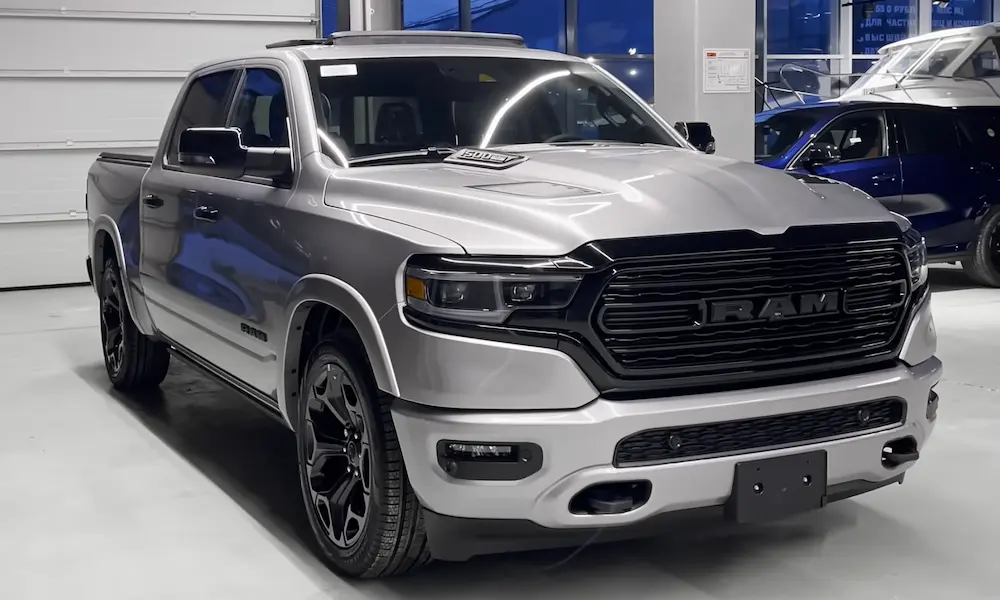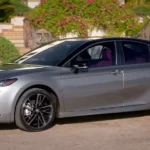When it comes to iconic American muscle car engines, few command the respect and admiration of the Dodge 440 V8. This legendary powerplant defined an era of automotive performance and continues to captivate enthusiasts today. But what exactly made this engine so special? Let’s dive deep into the specs, history, and enduring appeal of this remarkable piece of engineering.
The Birth and Evolution of the Dodge 440 Engine
The Dodge 440 didn’t just appear overnight. It emerged from Chrysler’s proven RB (Raised Block) series of big-block V8 engines. Introduced in 1966, this 7.2-liter giant was designed to deliver massive torque while maintaining reliability.
The 440 represented the pinnacle of Chrysler’s wedge-head engine development. While the company’s hemispherical combustion chamber design (the legendary Hemi) got most of the glory, the wedge-head 440 offered tremendous performance at a more accessible price point. In fact, many automotive historians consider the 440 to be one of the most practical high-performance engines of the muscle car era.
The engine evolved throughout its 12-year production run from 1966 to 1978, adapting to changing emissions regulations while maintaining its fundamental architecture and character.
Core Dodge 440 Engine Specs: The Numbers That Matter
The 440’s impressive specs tell the story of a purpose-built performance engine:
- Displacement: 439.7 cubic inches (7.2 liters)
- Bore x Stroke: 4.32 inches x 3.75 inches
- Block Material: Cast iron
- Cylinder Head Material: Cast iron
- Valvetrain: Overhead valve (OHV) with hydraulic lifters
- Firing Order: 1-8-4-3-6-5-7-2
What made these specs translate to real-world performance was the engine’s design philosophy. The 440 featured a relatively long stroke and large bore, creating an engine that prioritized torque production. This wasn’t just about peak numbers—it was about usable power throughout the rev range.
Performance Variations: From Magnum to Six Pack
Not all Dodge 440 engines were created equal. Across its production run, several key variants emerged:
440 Magnum/Super Commando
The standard high-performance version of the 440 (called Magnum in Dodge vehicles and Super Commando in Plymouths) delivered impressive numbers:
- Horsepower: 375 hp at 4,600 rpm
- Torque: 480 lb-ft at 3,200 rpm
- Compression Ratio: 10.5:1 (pre-1972)
- Carburetion: Single Carter AFB four-barrel
These engines featured stronger internal components and more aggressive camshaft profiles than their standard counterparts. They powered iconic vehicles like the Dodge Charger R/T and delivered remarkable performance for their era.
440 Six Pack/Six Barrel
For those seeking maximum performance, Chrysler offered the legendary “Six Pack” configuration (called Six Barrel in Plymouth models):
- Horsepower: 390 hp at 4,700 rpm
- Torque: 490 lb-ft at 3,200 rpm
- Carburetion: Three Holley two-barrel carburetors
- Compression Ratio: 10.5:1 (pre-1972)
This setup featured a trio of two-barrel Holley carburetors mounted on an aluminum Edelbrock intake manifold. The outer carburetors only opened under heavy throttle, creating an impressive surge of power when needed. The Six Pack configuration represented the pinnacle of 440 performance and became legendary among muscle car enthusiasts.
Torque Production: The 440’s True Strength
While horsepower numbers grab headlines, the 440’s torque production was its defining characteristic. This massive engine delivered stump-pulling torque from barely above idle:
- Low-end Torque: Over 400 lb-ft available below 2,000 rpm
- Mid-range Punch: Peak torque of 480-490 lb-ft at just 3,200-3,600 rpm
- Broad Power Band: Maintained over 400 lb-ft from 2,000 rpm to 4,500 rpm
This torque profile made the 440 perfect for quick acceleration from stoplights and highway passing. In practical driving situations, the 440’s torque advantage often gave it the edge over higher-revving, higher-horsepower engines. Dyno tests of the era confirmed the 440’s impressive torque curve, showing why these engines felt so powerful on the street.
The 440 vs. Contemporary Rivals
How did the 440 stack up against its competition? Let’s compare it to other big-block engines of the era:
| Engine | Displacement | Peak Horsepower | Peak Torque | Weight |
|---|---|---|---|---|
| Dodge 440 Six Pack | 7.2L (440 ci) | 390 hp | 490 lb-ft | ~680 lbs |
| Chevrolet 454 LS6 | 7.4L (454 ci) | 450 hp | 500 lb-ft | ~685 lbs |
| Ford 429 Cobra Jet | 7.0L (429 ci) | 370 hp | 450 lb-ft | ~670 lbs |
| Chrysler 426 Hemi | 7.0L (426 ci) | 425 hp | 490 lb-ft | ~740 lbs |
The 440 held its own against these fierce competitors. While the 426 Hemi and Chevy LS6 offered more peak horsepower, the 440 Six Pack matched or exceeded most rivals in torque production while offering a more reasonable price point and better street manners.
In real-world performance, a 440-powered Dodge Charger R/T could achieve:
- 0-60 mph: 5.7-6.0 seconds
- Quarter mile: 14.1-14.3 seconds at 98-100 mph
These were remarkable numbers for the late 1960s, especially for a production car weighing over 4,000 pounds.
Year-by-Year Evolution of the 440
The 440 engine changed significantly throughout its production run. Here’s how it evolved:
1966-1967: Introduction and Early Success
- Initial release in 1966 with 350 hp rating
- Used in full-size Chrysler, Dodge and Plymouth models
- Compression ratio: 10.1:1
- Single four-barrel carburetor setup
1968-1971: Peak Performance Years
- Introduction of 440 Magnum/Super Commando in performance models
- Six Pack/Six Barrel option introduced in 1969
- Highest factory power ratings (375-390 hp)
- Used in iconic muscle cars like the Charger, Road Runner, and GTX
1972-1974: Emissions Regulations Impact
- Compression ratio dropped to 8.2-9.2:1
- Power ratings changed to SAE net (more realistic but lower numbers)
- Output reduced to 225-280 hp (net)
- New emissions equipment added
1975-1978: Final Years
- Further emissions controls added
- Power declined to 200-255 hp range
- Primarily used in full-size cars, trucks and motorhomes
- Last year of production was 1978
Throughout its life, the 440 maintained its basic architecture while adapting to regulatory challenges. Even in its later, lower-compression form, the engine remained a torque monster.
Engineering Highlights of the 440
Several key engineering features made the 440 both powerful and durable:
Block Structure
The 440’s block was impressively robust, featuring:
- Thick cylinder walls for durability
- Deep-skirted design for crankshaft support
- Five main bearings with 2.75-inch journals
- Priority-main oiling system
This sturdy foundation allowed the 440 to handle significant power increases with aftermarket modifications. The block design proved so durable that many original engines remain in service today.
Head Design
While not as sophisticated as the Hemi, the 440’s cylinder heads were effective:
- Wedge-shaped combustion chambers
- Inline valve arrangement
- 2.08-inch intake valves/1.74-inch exhaust valves
- Efficient port design for good flow characteristics
These heads provided excellent thermal efficiency and strong torque production. Though not the highest-flowing heads of their era, they delivered impressive real-world performance.
Induction Systems
The 440’s various induction setups played a major role in its character:
- Standard four-barrel: Used Carter AFB or Carter AVS carburetors, balanced performance and drivability
- Six Pack/Six Barrel: Three Holley two-barrels on an aluminum intake manifold, with progressive linkage
- Cast iron intake manifolds on standard engines, aluminum on performance variants
The Six Pack setup in particular became iconic, with its distinctive triangular air cleaner and progressive linkage system that activated the outer carburetors only under heavy throttle.
The 440 in Competition
The Dodge 440 didn’t just excel on the street—it also made its mark in various forms of motorsport:
NASCAR Racing
While the 426 Hemi received more attention in NASCAR, the 440 served as a reliable alternative:
- More durable in long races than the high-strung Hemi
- Better fuel economy for longer stints between pit stops
- Used successfully by smaller teams with limited budgets
Drag Racing
In Stock and Super Stock classes, the 440 Six Pack was formidable:
- Dominated SS/E class in the early 1970s
- Powered numerous 12-second factory stock cars
- Formed the basis for many modified racing engines
Road Racing
The 440’s torque made it effective in certain road racing applications:
- Powered Trans-Am series Challengers
- Used in endurance racing where torque was valuable
- Provided good throttle response out of corners
The engine’s robust design made it particularly well-suited to endurance events where reliability was as important as raw power.
Modern Performance Potential
One reason the 440 remains popular today is its tremendous potential for upgrades. Modern technology has unlocked performance that would have seemed impossible in the 1960s:
Modern Rebuild Specifications
With current components, a 440 rebuild can achieve:
- Compression ratios of 9.5:1 to 10.5:1 on pump gas
- Horsepower potential of 500+ hp with the right parts
- Torque outputs exceeding 550 lb-ft
- Reliability for street use despite the increased output
Key Performance Upgrades
Today’s 440 builder has access to components that dramatically improve performance:
- Aluminum Cylinder Heads: Modern aluminum heads from companies like Edelbrock offer improved flow and weight reduction
- Electronic Fuel Injection: Systems like the Holley Sniper EFI can replace carburetors for better drivability
- Roller Camshafts: Modern hydraulic roller cams reduce friction and allow more aggressive profiles
- Forged Rotating Assemblies: Aftermarket cranks, rods and pistons increase durability for higher RPM operation
Stroke Increases
Many builders increase the 440’s displacement further:
- 4.15-inch stroke cranks create 500+ cubic inch engines
- Increased displacement boosts torque throughout the RPM range
- Custom pistons maintain reasonable compression ratios
With the right combination of parts, a modern 440-based engine can deliver over 600 horsepower while remaining streetable.
Identifying a 440 Engine
For those looking to confirm they have a genuine 440, there are several key identifiers:
Casting Numbers
The block casting number can be found on the left side of the engine (viewed from the front):
- 2536430: 1966-1969 440 blocks
- 2899430: 1970-1973 440 blocks
- 4006630: 1974-1978 440 blocks
VIN Derivatives
On engines original to the vehicle, a derivative of the VIN is stamped on the passenger side of the block:
- Location: Forward of the right cylinder head
- Format: Last 8 digits of VIN (pre-1968) or full VIN (post-1968)
Displacement Identification
Physical measurements can confirm a 440:
- Bore: 4.32 inches
- Stroke: 3.75 inches
- Deck height: 10.725 inches (taller than the similar B-series engines)
The 440’s Legacy in Popular Culture
The 440’s impact extended beyond the automotive world and into popular culture:
Iconic Movie Cars
Many famous movie cars were 440-powered:
- The black Dodge Charger in “Bullitt” (1968)
- The orange “General Lee” from “The Dukes of Hazzard” TV series
- Various cars in the “Fast and Furious” franchise
Music References
The 440 has been celebrated in song:
- “Little GTO” by Ronnie & the Daytonas (referencing the 440’s competition)
- “Shut Down” by The Beach Boys (comparing big engines)
- Numerous modern country and rock songs referencing muscle car engines
Collector Car Market Impact
Today, 440-powered Mopars command significant premiums:
- Numbers-matching 440 Six Pack cars can sell for $100,000+
- Original 440 Magnum engines add 15-20% to vehicle values
- Even “regular” 440 cars command strong prices at auction
Why the 440 Remains Relevant Today
Despite being out of production for over 40 years, the 440 still holds significant appeal:
Hot Rodding Potential
The 440’s combination of displacement, strength, and parts availability makes it a favorite for hot rodders:
- Easy to build for reliable street performance
- Responds well to basic modifications
- Can be built to produce modern levels of power
Historical Significance
The 440 represents a pivotal era in American automotive history:
- Last of the truly large-displacement production engines
- Symbol of the muscle car era’s engineering philosophy
- Bridge between old-school design and modern performance
Community Support
A vibrant community continues to support the 440:
- Active online forums dedicated to Mopar engines
- Specialized parts manufacturers
- Regular gatherings and shows for 440-powered vehicles
Building Your Own 440: A Basic Roadmap
For those inspired to build their own 440, here’s a simplified path:
Sourcing a Base Engine
Start with a solid foundation:
- Look for 1971 or earlier blocks for maximum strength
- Truck and motorhome engines often have less wear than car engines
- Check for cracks around the cylinder walls and main caps
Machine Work Essentials
Quality machine work is crucial:
- Bore and hone cylinders to proper specs
- Line boring of main bearing journals
- Deck surfacing for proper compression ratio
- Valve seat reconditioning
Assembly Considerations
Pay special attention to:
- Bearing clearances (typically 0.0020-0.0025 inch for main bearings)
- Piston-to-wall clearance (0.004-0.005 inch for street use)
- Valve timing and lift coordination
- Break-in procedure with proper oil and gentle operation
With careful planning and quality components, a rebuilt 440 can provide decades of reliable service while delivering impressive performance numbers.
The Dodge 440 Today: A Living Legend
The Dodge 440 engine has transcended its original role as a production powerplant to become a genuine American icon. Its blend of massive displacement, accessible torque, and sturdy engineering made it a standout in its time, while its adaptability has ensured its continued relevance decades after production ceased.
Whether powering a meticulously restored muscle car, serving as the heart of a custom hot rod, or continuing its reliable service in a vintage motorhome, the 440 remains a testament to an era when displacement ruled the automotive world. For enthusiasts seeking the authentic rumble and surge of classic American V8 power, few engines deliver the experience more convincingly than the legendary Dodge 440.















